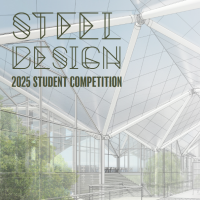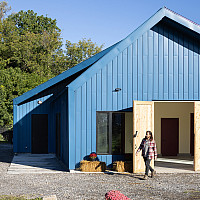Doctorate in Architectural Sciences, Center for Architecture Science and Ecology at Rensselaer Polytechnic Institute; M. Arch II, Performance Design, Center for Architecture Science and Ecology at Rensselaer Polytechnic Institute; Bachelor of Architecture, the University of Texas at Austin
Nina Wilson, PhD is an Assistant Professor at the Syracuse University School of Architecture, with over 15 years of experience in building technologies research and design. Wilson’s work questions the anthropocentric lensing of resilience in architecture through circular ecological framing of design, sustainable policy, and technology in buildings. With multi-year research awards exceeding $9 million in federal, state, and foundation funding, Wilson currently leads projects developing low-carbon material technologies, active building enclosure systems, deployable bioconstruction methods, and deep energy retrofit approaches for cold climates.
Wilson is Principal Investigator on the Net Zero Retrofit Living Lab, a research & demonstration project that develops low-carbon design approaches that integrate energy, human health, and life cycle criteria for affordable housing. Wilson advises PhD, Master of Science, Master of Architecture, and Bachelor of Architecture thesis students, and teaches sustainable building technology and design research courses at the Syracuse University School of Architecture. She operates her interdisciplinary research lab as a Faculty Research Fellow from the Syracuse Center of Excellence.
RESEARCH
Wilson’s pedagogical and research philosophy focuses on building interdisciplinary approaches to architectural systems inquiry. Her current work includes the development of reconfigurable environmental systems, renewable materials engineering for modular construction, and simulation and visualization tools for collaboration between architects and inventors. Wilson now operates her collaborative design practice out of New York, and is working with the New York State Research and Development Authority (NYSERDA) on developing models for affordable Net Zero housing for new construction and deep energy retrofit applications.
Wilson’s recent published work examines the potential of adapting aeronautical engineering techniques to the development of design-integrated environmental controls systems, and the role of aerodynamic performance in architecture. She is currently writing on the design of virtual interfaces for collaborative invention in environmental systems, including lighting, ventilation, and air quality remediation.












